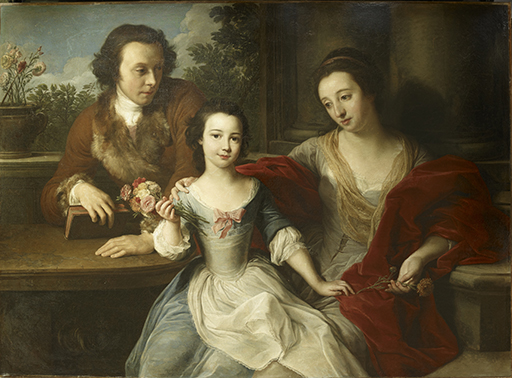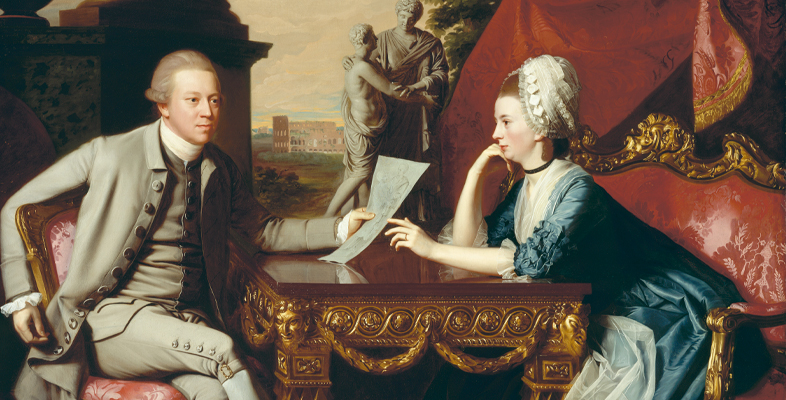2.5 The Grand Tour portrait: families

Personal relationships are also central to the Portrait of Thomas and Anna Marie Barrett-Lennard with their daughter Barbara Anne, 1749–50 (Figure 11). Some of the compositional elements you’ve explored in other Grand Tour portraits by Batoni are also seen in this earlier work. The figures are set against horizontal and vertical lines formed by a tabletop and architectural details such as the ledge. There is the same idea of an open window with a distant view; however, here the view is not of the classical ruins of Rome but the natural world of the garden. The composition is also based around the family circle. The poses and expressions of the parents are inclined inwards, towards the figure of Barbara Anne, and their gestures are linked. It is Barbara Anne who, like Gregory Page-Turner and Colonel Gordon, is the focus of our gaze and nearest to the viewer. She is painted posed on her mother’s knee with her left hand resting on her lap and looking straight out towards us. Her expression is one of happiness, unlike the sad expressions of her parents.
Seemingly there’s not much here to connect this portrait with the other images of tourists you have looked at so far, which all depict claims to classical knowledge. This Grand Tour portrait had a very different message. Thomas and Anna Marie lived at Belhus in Essex, and visited Rome the year after their only daughter, Barbara Anne, had died from tuberculosis, which is when Batoni painted this group portrait. Batoni therefore painted Barbara Anne in Rome not from life, but rather using a miniature portrait by the artist Thomas Hudson (1701–1779) which her parents carried with them. Portrait miniatures were an important way of keeping the likeness of a loved one close to you in the eighteenth century. For the Barrett-Lennards then it was Batoni’s skills in portraiture that were the key in commissioning this family memorial, rather than including overt reminders of place.
The Grand Tour portraits that you have studied in this section, then, show that these kinds of paintings could carry different messages. The images might commemorate a prestigious visit to a European city, celebrate or memorialise family relationships, or enhance the status and renown of the subject by depicting their close encounter with and knowledge of the ancient world. The same sorts of influences and motivations could also characterise the literature that was born out of the Grand Tour, as you will see in the next section.
